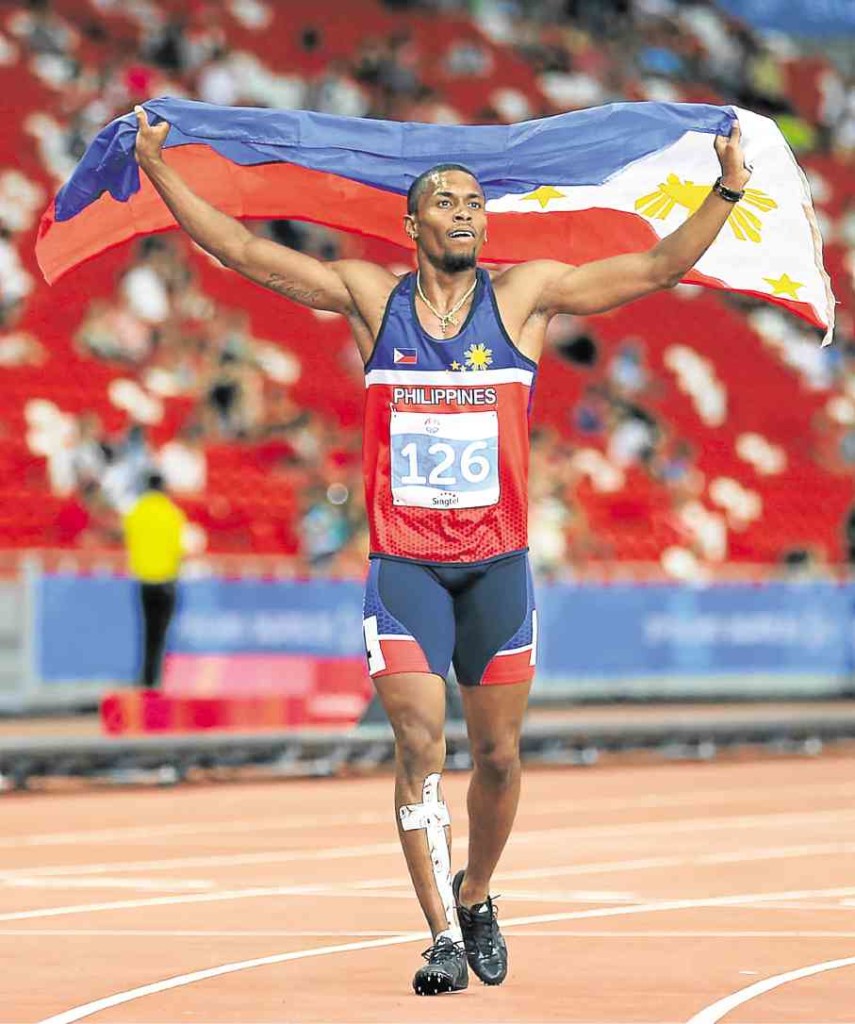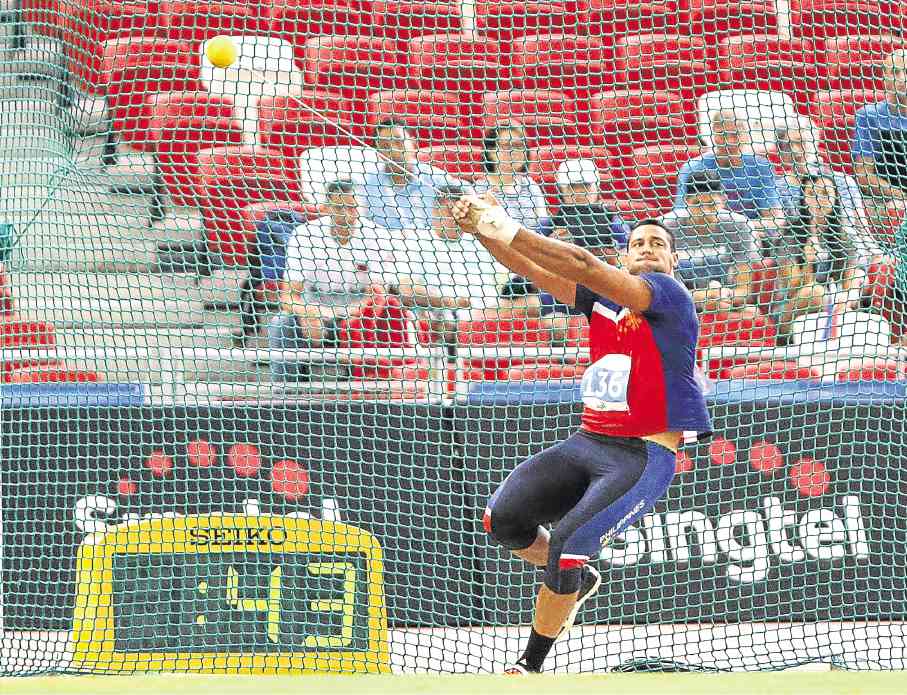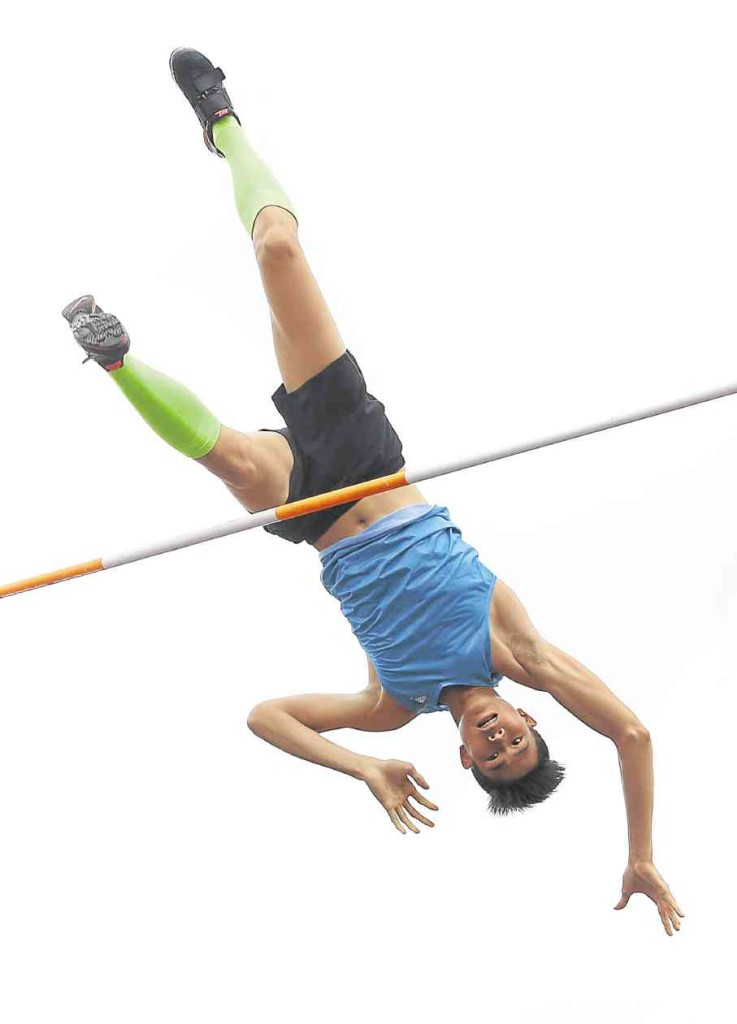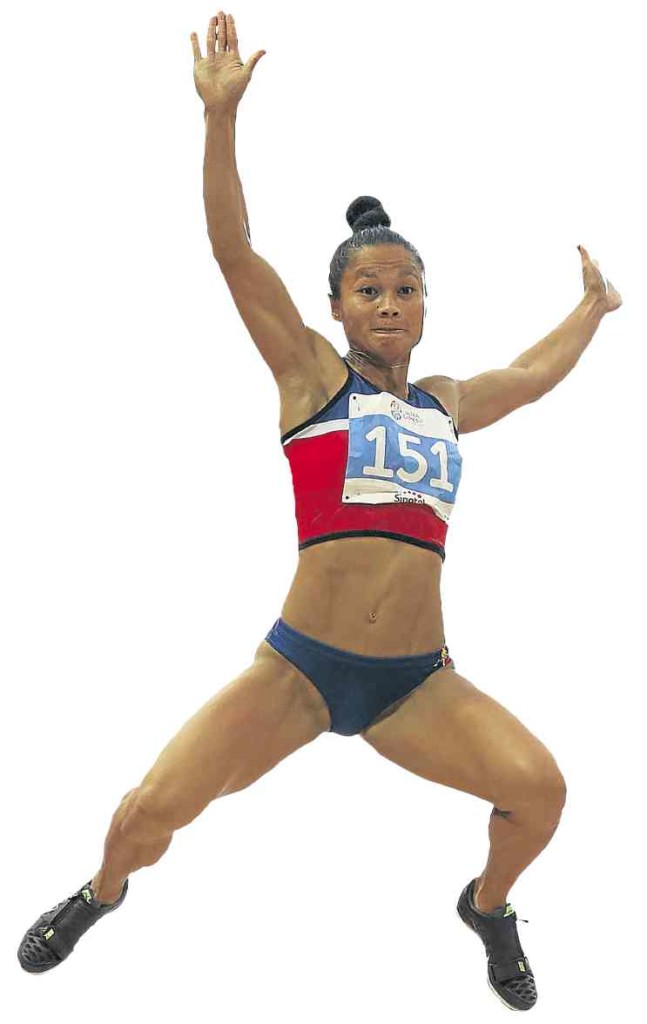Golden chance: Filipino athletes aim for 11 gold medals at SEA Games

Filipino-American speed demon Eric Cray targets another golden double in the 100 meters and 400m hurdles. —PHOTOS BY RAFFY LERMA
They endure conditions that are far from ideal, training in overcrowded facilities like the Philsports Stadium where they share the beat-up rubberized oval with recreational runners and fitness buffs.
But there should be no excuses for the country’s top track and field athletes, who are expected to be given the best training possible from now until August, when the Southeast Asian Games goes full swing in Kuala Lumpur. There, they will try to recapture the magic of the country’s proud past in a sport that has produced numerous heroes.
Article continues after this advertisementPhilippine athletics is gearing up for a banner year with a target of 11 gold medals in the SEA Games. It’s a daunting task with traditional powerhouses Thailand and Vietnam also raring to make their mark and host Malaysia going all-out for the overall crown at home.
But athletics chief Philip Ella Juico is brimming with optimism that when August comes around, Filipino athletes will be at their best when they see action in the Malaysian capital.

Kyla Richardson’s splendid 100m victory in Singapore capped the country’s huge century-dash double in the SEA Games.
“The prospects are bright for 2017,” Juico says. “We have a good mix of veterans and young talents who will converge in KL. They will be ready for the SEA Games and other international competitions this year.”
Article continues after this advertisementAthletics has regularly produced gold medals for the country in the SEA Games, but not since the heydays of former Asia sprint queen Lydia de Vega and Isidro del Prado in 1983 had the Philippines hit the double-digit mark in golds with 11.
Filipinos endured their worst performance in the 2011 SEA Games in Palembang, Indonesia, where they won only two golds, before bouncing back with six in the next edition in Nay Pyi Taw, Burma (Myanmar).
The biggest haul in the past 12 years has been nine golds, in Manila 2005, when the country hosted the Games. In the last two SEA Games in Myanmar and Singapore, respectively, the Philippines collected 11 golds, five of them in the Lion City where Filipino-American Eric Cray shone the brightest with a couple of victories in the 100-meters and 400m hurdles.
Juico, who took over from long-time athletics chief Go Teng Kok in 2013, says they are looking at 17 athletes who will undergo specialized training overseas with the help of private sponsors, led by Ayala Corp.
Pole vaulter EJ Obiena actually trains in Italy on a scholarship with the International Athletics Federation. With a personal best of 5.55 meters, Obiena is targeting to breach the Olympic qualifying mark of 5.70m this year.
“We’re pinning our hopes on Obiena making an improvement this year, thanks to his training in Italy,” says Philippine Amateur Track and Field Association (Patafa) secretary general Renato Unso. “He has immense potential to really make an impact and his training will go a long way in helping him realize his potential.”
National coach Jojo Posadas, a former 800m gold medalist in the SEA Games, says the conservative prediction is “eight to 12 golds” in Malaysia. The composition of the team will still be subject to evaluation, particularly the young athletes who will be given a chance to prove themselves. “We’re taking a wait-and-see approach,” he says. “We hope to get enough support so we could have more athletes that will be given specialized training.”
While he vouches for the competence of Filipino coaches, Posadas stresses that Filipino athletes stand to benefit from training overseas, where there are better training facilities. “When you train overseas, you get challenged,” he says. “There’s just a high standard for performance training abroad.
“We had to make do with facilities at Philsports,” Posadas adds. “It wasn’t until October last year when national athletes enjoyed exclusive use of the Philsports track from 1 p.m. to 4 p.m. It’s usually overcrowded.”
Cray and Kayla Richardson, who captured the gold in the women’s century dash in Singapore, and reigning SEA Games hammer throw champion and record-holder Caleb Stuart are among the Filipino athletes based in the United States.
Among the national pool’s up-and-coming athletes, Mark Diones, 22, has shown plenty of promise. He has already erased the 7-year-old national record of Joebert Delicano in triple jump with a leap of 16.29m last November in the Patafa weekly relays.
“He’s a gold-medal prospect and we’re confident he will do well,” Posadas says of Diones, who hails from Libmanan, Camarines Sur. The Jose Rizal U Criminology graduate has already hit the silver-medal standard set by the Philippine Olympic Committee and the Philippine Sports Commission for national athletes aspiring to compete in the 11-country biennial Games.
A discovery of former long jumper Samson Calisura, Diones missed the podium after winding up fourth in Singapore last year.
“When I began training him after the 2010 Palarong Pambansa, Diones had a personal best of 14.43m,” Posadas says. “Now, he has become a gold-medal potential. We expect him to still improve before the SEA Games.”
Another gold-medal prospect is Nueva Ecija-born decathlete Aries Toledo, who surpassed the silver-medal output last year. “With the gold medalist in decathlon retiring, I think Toledo is the favorite for the gold,” Posadas says. “But he will still compete for his spot with Sean Guevarra.”
Cray faces stiff opposition in defending his sprint crown against Thai rivals, but Juico says the Fil-Am’s participation in the World Championships in London before the SEA Games will give him an edge in Malaysia. Cray is also a candidate to see action in the 4×400 relay along with fellow Fil-Am Trenten Beram, Edgardo Alejan, Jr. and Archand Christian Bagsit.
Christopher Ulboc (3,000m steeplechase), Marco Vilog (800m), Marestella Torres-Sunang (long jump), Jessica Barnard (long distance), Patrick Unso (hurdles), Richardson (sprints), Zion Corrales-Nelson (sprints) and Mervin Guarte (middle distance) are also tipped to strike gold in their respective events.
“There will be little time for rest for these athletes from now until August,” says Posadas. “We’re on a mission.”


